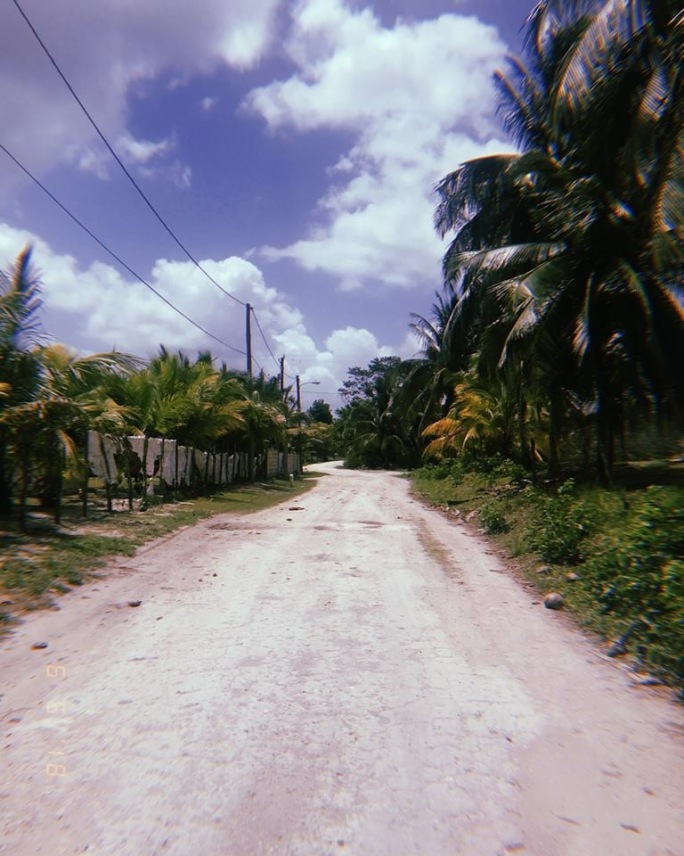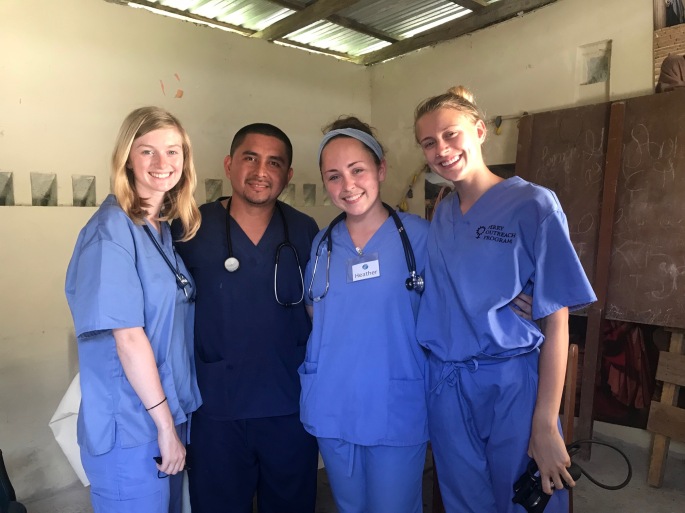What’s an example (or story) of something you’ve seen in Belize that connects with something we discussed in class?
Westernization is a real life issue and it is progressing more and more throughout the years. Even in some of the very underdeveloped towns in Belize that we visited there were so many signs of westernization that was impacting their culture. In an example as simple as Coca-Cola, these signs were everywhere! I mean everywhere. No matter if the town was big or small, developed or underdeveloped, people could not escape from these American companies intruding on their own country and culture. I do not believe in Westernization of all countries and that just because there are ways that work for us does not mean they need to work for all countries throughout the world. I think a big problem with westernization is that these developed countries always think that they are right, about everything. Because of this, we think that everybody would want to and should be like us. When I visited Belize, the things I enjoyed the most of Belizean culture was how they were not like us. I truly cherished the things I learned and the experiences I had that I would never be able to have in America.
How has this experience influenced your future career goals? (Confirmed, shifted, clarified, etc.)
This experience definitely confirmed my future career goals. Almost all of my life I have wanted to be a doctor, specifically a pediatric doctor. The time I spent in Belize and at the clinics helped me to confirm that this is what I wanted to do for the rest of my life. I have always loved being around kids and to have them around me and in the clinics was such a joyful experience to have. It was like when a kid entered the clinic or was there during a house visit, my whole body lit up and I was so excited to play with them. It was also very confirming for me to have other people come up to me to tell me that they thought I was really good with kids and that is was so obvious that I was passionate about medicine and children together. Every day we spent on this trip just made me more excited for the future to come and that I too one day could be a doctor like the ones we worked with in Belize.
What are the global health initiatives or priorities of Belize that you’ve witnessed while here?
Maternal Health was a health initiative that I saw Belize took a lot of priority in trying to improve. When we went to the hospital, there were so many posters about how to properly breastfeed your child as well as the importance of breastfeeding after birth. It was apparent that Belize saw this initiative as high priority. Dr. Overman was telling us that there is a beautiful statue in Corozal, Belize of a woman breastfeeding her child. ALthough we were not able to see it because we never went to Corozal, it confirmed our ideas that maternal health is something they take very seriously in Belize. Although there were not any statues in Orange Walk that I saw, there were still so many posters and paintings that were all throughout the district. I was really happy to see how much effort the country had been putting into this movement and how much the statistics in maternal health were improving because of it!
Another priority I witnessed in Belize was drinking clean and purified water. Like the breastfeeding posters, there was a lot of advertising of drinking the “Crystal” purified water. When we went to the house visits, almost all of the houses we went to said that they buy the purified water jugs and use that as their water source. I was also really happy to see that so many of these families were avoiding the drinking water that could be contaminated with worms and sticking to the purified water regimen. There were hardly any people that came through the clinics that got diagnosed with worms so it is apparent that drinking the purified water is really improving their overall health.
What level of impact to do feel you are making in your service communities?
When I arrived to Belize, I really thought that we are going to be making a big difference by coming in, setting up these free clinics, and trying to help the people. Throughout the trip and especially on clinic days, I sometimes felt hopeless that we were not making as much of an impact in these communities as I originally thought we were going to be. It was really hard for me to see patients that were in so much chronic pain and the doctors only give them a 15 day supply of Ibuprofen or give a woman with anemia a 30 day supply of iron pills. It was hard for me to comprehend how it was okay to only be helping these people for 15 or 30 days max. Were they just supposed to be going back to how it was before when the 30 days were up? How was that helpful? Another difficult thing about this trip was when a patient would come in and the doctor could not definitively diagnose the patient and would suggest for them to go to the hospital to get blood work done, get an X-ray, etc. It was upsetting to me that I would not be able to know that when that patient left the clinic whether he or she would go to the hospital to get the additional tests done or if they even had a way to get there? The unknown of some of those patients was really hard for me. After expressing some of these frustrations, my roommate during the trip showed me the importance and value to us being there. She helped me to understand that even if we only gave someone vitamins or we even just made them laugh or smile, we were making a difference. That was a really helpful aspect of the trip that I held onto. Overall, I don’t think that our two-week trip to Belize was life changing, but I do believe that what we did when we were there mattered, and for that, I am happy and grateful that we went.
What challenges did you observe in Belize that can/may hamper global health efforts? How, why?
One thing I noticed during my trip was the lack of infrastructure when it came to the roads you had to travel in Belize. At no point during my entire trip did I see one stop light or stop sign or anything. The only thing I observed were speed bumps you would go over in the roads periodically to try to prevent people from speeding. Overall, the driving situation felt more like a “free for all” then it felt safe. There were many giant potholes we had to go over and sugar cane debris filled the roads at all times, no matter where we went. This made me question whether or not Belize had many deaths or hospitalizations due to driving accidents. We talked about how driving accidents are a major contributor to deaths in a lot of developing countries in our class, and I could not help but think about it the entire time we were on the trip.

Another challenge I noticed during this trip was lack of speciality doctors or higher trained doctors than the ones we worked with. The doctors we worked with on our trip went straight to medical school from high school and spent 6 years there to become a general practitioner. One of the doctors was telling me that majority of the people who become doctors do not do anymore specific training after that to have a speciality because they usually want to start practicing medicine immediately. I found this to be a good thing in the sense that there were many doctors who had a well-rounded knowledge of many things, but I also found it to be a challenge. Since there were not many doctors that are highly trained in one specific speciality, if a patient presented with symptoms that were “out of the normal range” for the general practitioners, how would they be properly diagnosed? This is an issue I see slowly diminishing throughout the next 20 years since Belize’s health care system is really starting to improve but as of right now, there is a huge lack in speciality doctors and a dire need for them.

What has been challenging for you in this experience? How did you handle this experience?
The most challenging part of this experience for me was enduring the heat. Although it may be obvious to all that it was of course “hot” and a silly thing to have as such a challenge, for me, being in the heat becomes debilitating for me. I am extremely sensitive to hot temperatures and have suffered from many heat strokes before. So for me, being in such a hot environment was the part of the trip that I was worried about the most. Nevertheless, I did not want to let that stop me from being in this amazing program and experiencing all that I came to learn. Every morning I would drink an entire water bottle during breakfast along with taking some electrolyte replenishers. Throughout the day I would drink multiple water bottles as well as bring some gatorades. My goal was to stay as hydrated and cool as possible. The house visit days were much harder to accomplish these goals due to us being outside in the sun and heat majority of the day. There were a few days where I got really bad headaches and felt nauseous from the dehydration and heat. Although I had a low grade headache for the majority of the trip, the pros of this trip made it easy to ignore the headache and just continue to take it all in and learn everything that I could.
If you could steal a part of culture to bring home, what would it be?
I would steal everyone’s positive attitudes and love for everything. The people that I met in Belize had this radiant energy about themselves that made me wish people in America were like. It was crazy to me that some of these families had gone through the toughest of times and barely had a roof over their heads but still they smiled and acted as if they still had the world. I think many people in the US take for granted what we have and the luxuries we get without even noticing. During community day, we fed all of the children there lunch but we had been given a prepackaged lunch. We all got a few cucumbers and carrots in our boxes and I asked the little girl I was playing with if she wanted mine. You would have thought I had just given the little girl a brand new barbie doll the way she lit up with excitement. It was an amazing and eye-opening experience to be able to interact with people who are gracious and appreciative with anything that they are given, even if it’s just a smile and a wave hello.




